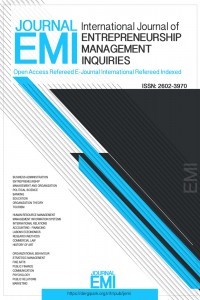
International Journal of Entrepreneurship and Management Inquiries
Yazarlar: Savaş Selahattin ATEŞ
Konular:İşletme
Anahtar Kelimeler:Cockpit image recorder,Safety,Cockpit,Privacy
Özet: The Universal Declaration of Human Rights was announced on 10 December 1948 by the United Nations General Assembly. Article 12 of the Universal Declaration of Human Rights states: “No one shall be subjected to arbitrary interference with his privacy, family, home or correspondence, nor to attacks upon his honor and reputation. Everyone has the right to the protection of the law against such interference and assault”. The National Transport Safety Board (NTSB) is an independent federal agency appointed to investigate transport accidents, identify possible causes and provide safety recommendations. The NTSB, after conducting an accident investigation, determines how the incident took place. It publishes recommendations to prevent future accidents. NTSB recommends installing a Cockpit Image Recorder (CIR) on most gas turbine-operated aircraft. The cockpit image recorder installed in addition to the sound and flight data recorders in the cockpit will provide additional information for the researchers. This idea was first proposed by the NTSB in 2000. Video cameras will provide researchers with critical information about “events in the cockpit before and during an accident”. However, the pilots opposed proposal of NTSB for a cockpit image recorder on the grounds that there would be a breach of privacy. Because in the past accidents, voice and data records of the flights were leaked to the public. Pilots do not particularly like the idea of being tried in court based on a visual record. Aviation safety is the primary goal of ICAO (The International Civil Aviation Organization) recommends that cockpit image recorders be standard equipment on commercial aircraft. ICAO also wants the newly designed aircraft to start using cockpit image recorders as standard equipment by 2023. Flight data recorder and cockpit voice recorder were used to analyze human performance after events or accidents. However, the lack of image data in these data adversely affected the analysis of the incident or accident. The purpose of the Image Recorder in incident and accident analysis is to record the reactions of pilots to flight control systems and audible and visual alerts coming from their systems. The cockpit image recorder will focus on the commands given rather than on the faces of the flight crew. In the first part of this article, the current situation of flight recorders will be examined. In the second part, the need for a cockpit image recorder will be given due to the insufficiency of the existing flight recorders in accident investigations and investigations. In addition, face-to-face interviews were conducted in order to reveal the hesitations and concerns of the pilots against this device with intuitive analysis. In the last part of the study, the advantages and requirements of the cockpit image recorder in ICAO aircraft will be mentioned and suggestions will be made.